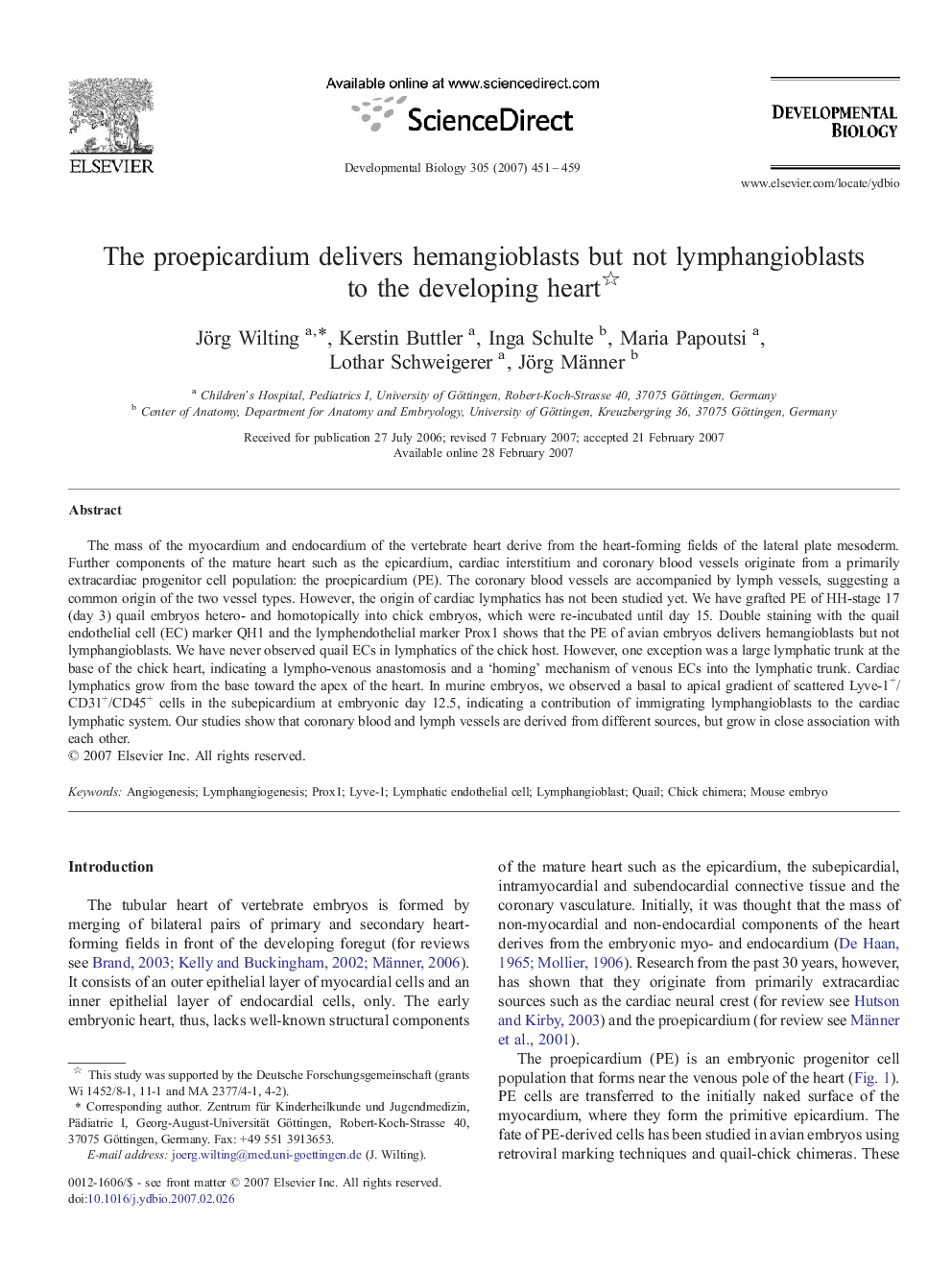| Article ID | Journal | Published Year | Pages | File Type |
|---|---|---|---|---|
| 2175327 | Developmental Biology | 2007 | 9 Pages |
The mass of the myocardium and endocardium of the vertebrate heart derive from the heart-forming fields of the lateral plate mesoderm. Further components of the mature heart such as the epicardium, cardiac interstitium and coronary blood vessels originate from a primarily extracardiac progenitor cell population: the proepicardium (PE). The coronary blood vessels are accompanied by lymph vessels, suggesting a common origin of the two vessel types. However, the origin of cardiac lymphatics has not been studied yet. We have grafted PE of HH-stage 17 (day 3) quail embryos hetero- and homotopically into chick embryos, which were re-incubated until day 15. Double staining with the quail endothelial cell (EC) marker QH1 and the lymphendothelial marker Prox1 shows that the PE of avian embryos delivers hemangioblasts but not lymphangioblasts. We have never observed quail ECs in lymphatics of the chick host. However, one exception was a large lymphatic trunk at the base of the chick heart, indicating a lympho-venous anastomosis and a ‘homing’ mechanism of venous ECs into the lymphatic trunk. Cardiac lymphatics grow from the base toward the apex of the heart. In murine embryos, we observed a basal to apical gradient of scattered Lyve-1+/CD31+/CD45+ cells in the subepicardium at embryonic day 12.5, indicating a contribution of immigrating lymphangioblasts to the cardiac lymphatic system. Our studies show that coronary blood and lymph vessels are derived from different sources, but grow in close association with each other.
